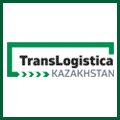Food for thought: how better labels can steer consumer behaviour
2012 02 28
- Details
Rising obesity levels have given a new urgency to efforts aimed at improving European eating habits. European research is helping, by finding out how food labelling can change and improve consumer habits.
Deny it as we might, but Europeans are getting fatter. From 1990 to 2006, obesity levels in Europe tripled on the whole, according to statistics from the World Health Organization (WHO).
Faced with this unprecedented public health challenge, Europe is changing the way food products are labelled in an attempt to improve citizen's overall nutritional education. One research project looking into this issue is FLABEL (Food Labelling to Advance Better Education for Life) which receives €2,860,000 in EU-funding. FLABEL has examined more than 37,000 products in 84 retail stores, finding an average 85% of the products with back-of-pack (BOP) nutrition labelling or related information, versus 48% for front-of-pack (FOP) information.
The research from FLABEL and other projects is already feeding into the European debate. In June last year new rules on food labelling were agreed by the European Parliament and EU member states, setting obligations on manufacturers to display nutritional information on packaging. The rules say that within five years EU food labels must indicate the nutritional breakdown for energy, protein, fat, saturated fat, carbohydrates, sugar and salt levels. It also says pre-packed meat should indicate the country of origin, and allergenic substances must be shown. And the legibility of labels is to be improved with a minimum font size.
Indeed, sometimes labels can be misleading: in November last year, a German court ordered the makers of a well known brand of chocolate products to change the labels which gave the impression that its nut-chocolate spread had more vitamins and less fat and sugar than it did.
Giving consumers the best information possible can clearly help them decide whether the product on a shop shelf is really right for them. FLABEL looks at the question of how to label products, as food label information is not always understood by consumers. Until now, research on how nutrition labels are used by consumers in real-world shopping situations has been limited. The research can then help policy makers and food manufacturers to determine the most effective way to deliver the data.
Food labels alone will not solve Europe’s obesity problems: it will require a complex mix of solutions covering factors like education, physical activity, portion size and frequency of consumption. But it is important nonetheless, given that on average, Europeans have about a half hour each week to do all their food shopping, forcing them to make quick decisions while rushing through the supermarket aisles. Devising better labels could give them the tools to make healthier choices.
Source MEDIA CONSULTA
The magazine SEA has been published since 1935
International business magazine JŪRA MOPE SEA has been published since 1999
The first magazine in Eurasia in the four languages: English, Chinese, Russian and Lithuanian
|
|




.jpg)






